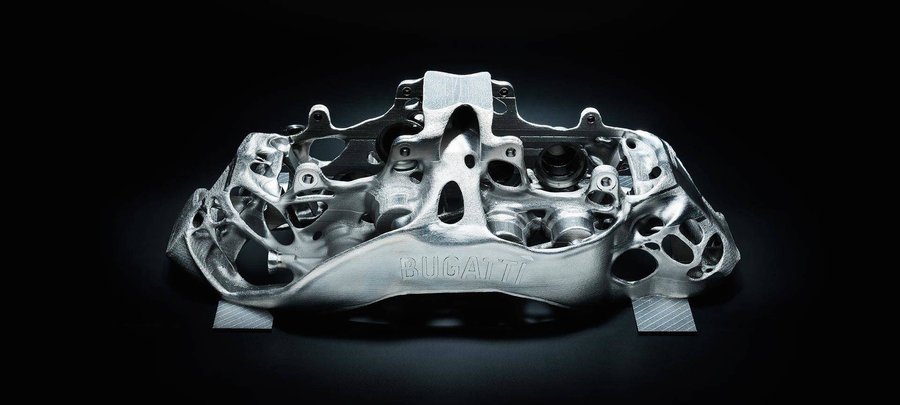Bugatti Creates First 3D-Printed Brake Caliper, Just 6.4 Pounds

Three-dimensional printing could make future Bugattis even quicker. The company's latest innovation is an eight-piston monobloc brake caliper that would be the largest in the industry on a production vehicle. Using titanium cuts the component's weight to just six pounds six ounces (2.9 kilograms), versus 10 pounds 13 ounces for the aluminum caliper currently on Chiron.
"In terms of volume, this is the largest functional component produced from titanium by additive manufacturing methods," Frank Götzke, Head of New Technologies at Bugatti, said in the part's announcement. "Everyone who looks at the part is surprised at how light it is – despite its large size. Technically, this is an extremely impressive brake caliper, and it also looks great."
Each one of these calipers requires 45 hours to produce. The production process involves putting down titanium powder and melting the substance with four, 400-watt lasers. After 2,213 layers, the structure is complete, but there's still a lot more work to do. Heat treating strengthens the part, and then the piece requires smoothing. Finally, a five-axis mill machines the contours of all the functional surfaces like on the pistons.
When the long process ends, the result is a caliper that's far stronger than what the Chiron currently uses. The specific titanium alloy generally appears in the undercarriage and wings of aircraft. Bugatti will start conducting real-world trials of the 3D-printed part in the first half of this year and will investigate how to reduce production times.
Bugatti also has other 3D-printed components under potential evaluation for future production. For example, the company uses the process for an aluminum windshield wiper board that weighs half as much as the current part.
Related News


